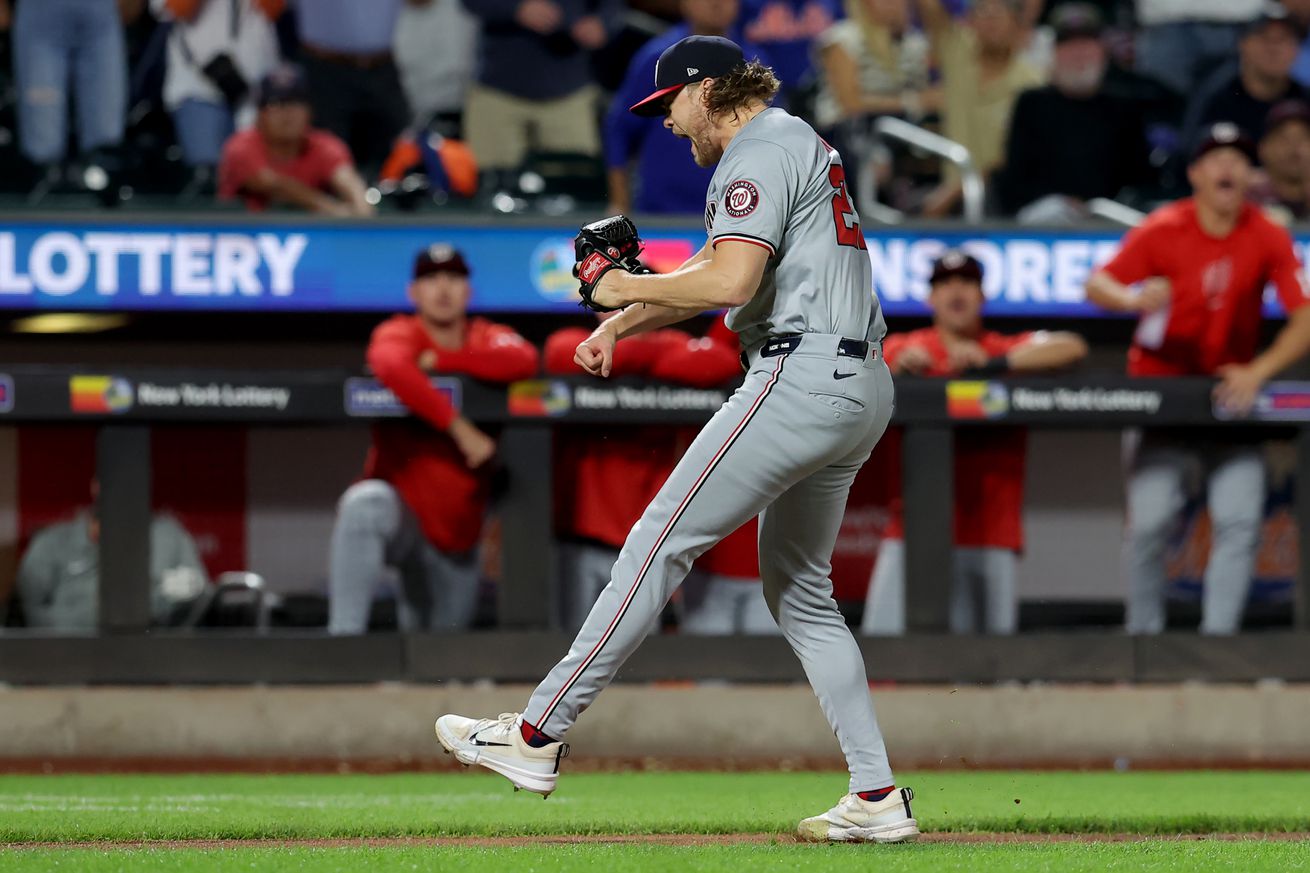
After a dominant first half, Jake Irvin struggled down the stretch. What does he have to do to get back to his best
In the first half of the season, Jake Irvin was a revelation. He was a workhorse and looked like a potential frontline starter for the Nationals. Maybe not an ace, but a front of the rotation guy.
That run was punctuated by a July 4th gem, where Irvin went 8 scoreless innings, only allowing one hit and one walk against the Mets. The Nationals won that game 1-0 after a Jesse Winker home run. It proved to be the high water mark for both Irvin, and the team as a whole. After that performance, Irvin had a 2.80 ERA on the season.
Irvin would wear down as the season went along. He posted a 6.50 ERA in his last 15 starts, as he limped down the stretch. However, his fall off is explainable, and there are ways to prevent it going forward.
First off, Irvin was due for some natural regression. He was not going to post a 2.80 ERA for the season. His FIP and xERA were in the mid 3’s at that time, pointing to Irvin’s over performing. However, his second half was not just natural regression.
Irvin was tiring as he was throwing more innings than ever before. Before this season, Irvin had never thrown more than 143.1 innings in a season. In 2024, he threw 187.2 innings, which was fifth in the National League. Irvin was noticeably less sharp down the stretch, and his velocity began to dip. Now that he has the experience of throwing that many innings, he should be more capable of holding up late in the season.
One thing I would like to see Irvin do is develop a slider. His four-seamer, sinker and curveball made up nearly 90% of his pitches last season. Irvin tried adding a cutter last season, but he did not trust it much and it was not particularly effective. He needs a pitch in that velocity band between his fastballs and his slower curveball. A slider around 86 MPH would fit that profile. With all the pitching labs these days, and his ability to spin a curveball, Irvin should be able to pick up a slider.
Finishing the season strong, and optimizing his pitch mix would help Irvin fulfill his potential as a middle of the rotation starter. While Irvin does not have the eye popping stuff of a Mackenzie Gore, his strike throwing ability gives him a high floor. He will be 28 years old this season, but he is under team control until 2030, so he should be a mainstay in the Nationals rotation.
Whether he is a middle of the rotation guy, or more of an innings eater comes down to how much he can build off of his first half. Irvin was only Nationals starter who consistently gave them six innings last season. Irvin’s goal this season should be to give the Nats another 180ish innings of work, this time with a sub 4 ERA.
